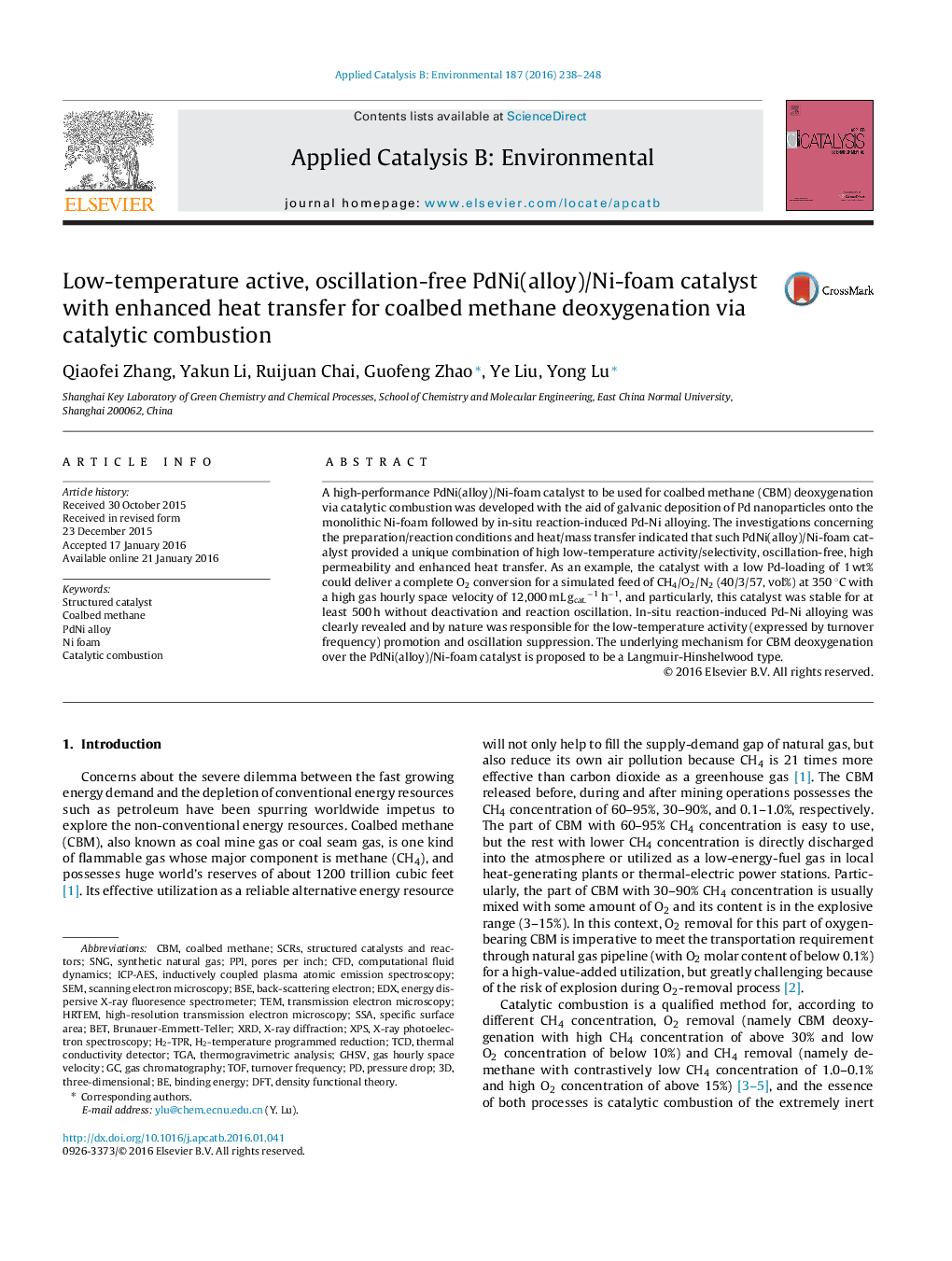| Article ID | Journal | Published Year | Pages | File Type |
|---|---|---|---|---|
| 45106 | Applied Catalysis B: Environmental | 2016 | 11 Pages |
•We developed a PdNi(alloy)/Ni-foam catalyst for coalbed methane deoxygenation via catalytic combustion.•The catalyst was obtained via galvanic deposition method followed by in-situ reaction-induced PdNi alloying.•The catalyst was active/selective, stable and highly resistant to oscillation.•The Ni-foam-structured design endowed catalyst with high permeability and enhanced heat transfer.•In-situ formation of PdNi alloy was essential to the activity promotion and oscillation suppression.
A high-performance PdNi(alloy)/Ni-foam catalyst to be used for coalbed methane (CBM) deoxygenation via catalytic combustion was developed with the aid of galvanic deposition of Pd nanoparticles onto the monolithic Ni-foam followed by in-situ reaction-induced Pd-Ni alloying. The investigations concerning the preparation/reaction conditions and heat/mass transfer indicated that such PdNi(alloy)/Ni-foam catalyst provided a unique combination of high low-temperature activity/selectivity, oscillation-free, high permeability and enhanced heat transfer. As an example, the catalyst with a low Pd-loading of 1 wt% could deliver a complete O2 conversion for a simulated feed of CH4/O2/N2 (40/3/57, vol%) at 350 °C with a high gas hourly space velocity of 12,000 mL gcat.−1 h−1, and particularly, this catalyst was stable for at least 500 h without deactivation and reaction oscillation. In-situ reaction-induced Pd-Ni alloying was clearly revealed and by nature was responsible for the low-temperature activity (expressed by turnover frequency) promotion and oscillation suppression. The underlying mechanism for CBM deoxygenation over the PdNi(alloy)/Ni-foam catalyst is proposed to be a Langmuir-Hinshelwood type.
Graphical abstractFigure optionsDownload full-size imageDownload as PowerPoint slide
